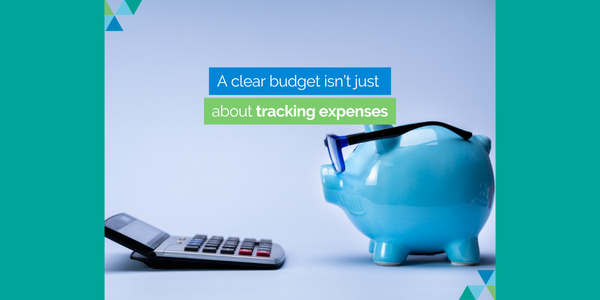Assessing Your Business’s Profit: Everything a Small Business Owner Needs to Know

In the fast-paced realm of business, having your finger on the pulse of your financial health is more than just good practice; it's vital. The Profit and Loss (P&L) or Income Statement is a powerful tool.
Your P&L offers insights into how much your business has earned and spent over a particular period, acting as a beacon for informed decision-making, trend spotting, and strategic planning. Regular assessments of your business's P&L enable swift adaptations to changing circumstances, aid in managing cash flow, ensure compliance with tax obligations, and provide a framework for future forecasting.
Above all, monitoring your P&L regularly provides accountability, risk management, and assuring stakeholders of the business's health. We’ve developed this guide to help small business owners understand and efficiently assess their P&L to help ensure financial sustainability.
What is a Profit and Loss (P&L) Statement?
A Profit and Loss (P&L) statement, sometimes known as an Income Statement, outlines a company's revenues, costs, and expenses over a specific period to show its net profit or loss, reflecting operational performance. It provides a snapshot of your business's financial health.
What’s the difference between a P&L and a Balance Sheet?
A P&L tells you how much your business has made and spent over a specific period. In contrast, a balance sheet provides a snapshot of a company's assets, liabilities, and equity at a particular point in time, illustrating its overall financial position.
Why is it important to monitor your P&L Statement regularly?
Monthly or quarterly profit reviews are essential for maintaining a pulse on a business's financial well-being. They act as both a diagnostic tool and a guide, ensuring that companies remain agile, informed, and proactive in their financial management.
Here are nine reasons to ensure that you are regularly assessing your P&L:
1. Timely Decision Making
Monthly or quarterly reviews allow businesses to adapt to changing circumstances quickly. With up-to-date information on profitability, you can make informed decisions regarding expenditures, investments, and strategic shifts.
2. Spotting Trends
Regular assessments let you identify both positive and negative financial trends earlier. This frequent check can help you spot a decline in profits before it becomes more severe or recognise and capitalise on emerging growth patterns.
3. Cash Flow Management
Understanding your monthly profitability is key to managing cash flow. If profits are declining or are negative, you'll need to ensure you have enough liquidity to cover expenses.
4. Operational Adjustments
Regular profit review can highlight operational inefficiencies. For example, if certain expenses consistently affect profits, you may need to renegotiate supplier contracts, adjust pricing, or re-evaluate overhead costs.
5. Stakeholder Assurance
If you have investors, partners, or shareholders, they'll appreciate frequent updates on the business's health. Regular profitability reviews can provide them with confidence or alert them to potential issues.
6. Goal Setting and Monitoring
Businesses often set profit targets. Monthly checks ensure that you're on track to meet these goals, and, if not, allow you to adjust strategies accordingly.
9. Increased Accountability
When you know that you'll be examining the numbers each month, there's an increased sense of accountability throughout the business to meet financial targets.
Key Numbers to Look For in Your P&L
1. Revenue (Sales)
This is the total amount of money taken in from selling your product or service.
If this number is growing month-on-month, it's a positive sign. If it's declining, you'll need to dig deeper to find out why.
2. Cost of Goods Sold (COGS):
These are the direct costs related to producing your products or delivering services.
A sudden spike in COGS might indicate supply issues, increased raw material costs, or inefficiencies in production.
3. Gross Profit
Gross Profit is calculated as Revenue minus COGS. It shows how much money you have left after paying for the goods you've sold.
A consistently high Gross Profit indicates strong control over production or service costs. A declining Gross Profit might suggest rising COGS or falling prices.
4. Operating Expenses
These are the costs involved in running your business that aren't directly tied to making a product or service, like rent or salaries.
Rising expenses without an increase in revenue might indicate inefficiencies, unnecessary costs, or potential areas to streamline.
5. Net Profit
This is the bottom line. It's what's left after you subtract all costs (both COGS and operating expenses) from your revenue.
This is a clear indicator of your business's profitability. A consistent or growing net profit is a good sign, while a declining net profit necessitates a deeper review.
Top Tips For Reviewing Your P&L Statement
Consistency is Key
Make it a monthly ritual. Regular review helps spot trends, anomalies, and areas of concern early on.
Compare with Previous Months
Look for patterns. Is there a specific time of the month when costs spike? Do you see seasonal trends in your revenue?
Ask Questions
Why did COGS increase this month? Why was there a spike in operating expenses? Questions lead to answers and actions.
Look Beyond the Numbers
For instance, if revenue is down, consider external factors – was there a significant event, like a holiday or local festival, that could have affected sales?
Seek Expert Advice
If there are numbers you need help understanding or something feels off, consult with an accountant or business advisor from the team at Wrights Chartered Accountants.
--------------------------------
Understanding your P&L statement is akin to checking the vital signs of your business's financial health. It provides crucial insights that can help in making informed decisions. So, even if numbers aren't your forte, embrace your P&L. After all, knowledge is power, and in business, it's also profitability.
If you would like help with your small business accounting, we have a team of strategic accountants who can combine their specialist knowledge and expertise in audit, compliance and commercial finance to provide you with effective solutions for growth. To find out more about how we can help you, please contact one of our team at admin@wrightsca.com.au.
Important notice: This article provides information rather than financial advice. The content of this article, including any information contained in it, has been prepared without taking into account your objectives, financial situation or needs. You should consider the appropriateness of the information, taking these matters into account, before you act on any information.










